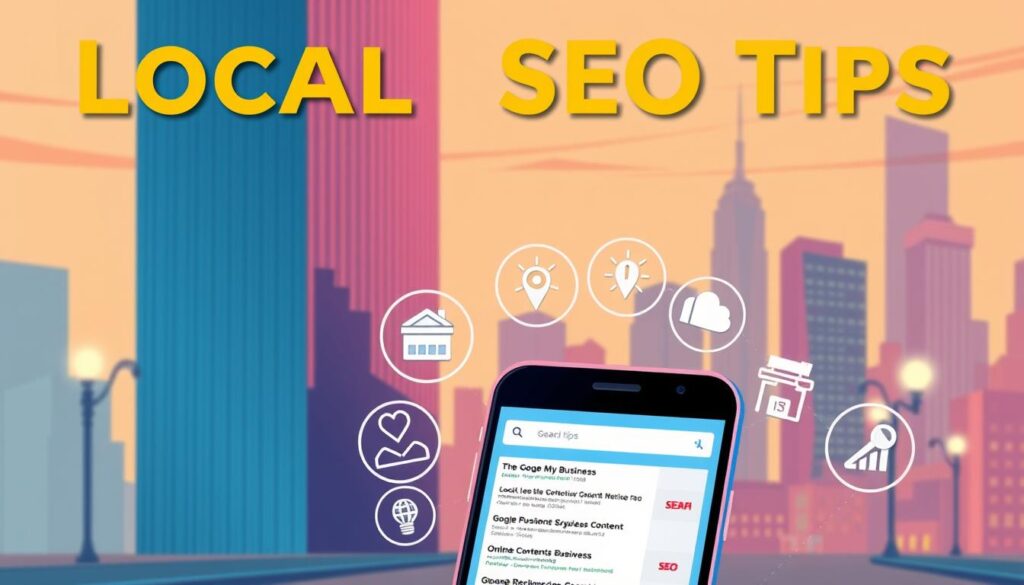In today’s fast-paced, data-driven world, the ability to present complex information clearly is more crucial than ever. Data visualisation has become an essential skill, helping professionals turn raw datasets into meaningful insights. This guide will walk you through the best data visualisation tools available, highlighting what makes each one stand out.
Modern data visualisation tools are powerful solutions that transform raw data into interactive charts and dashboards. These tools not only simplify data analysis but also make it more accessible for everyone. Whether you’re a business professional or a researcher, data visualisation helps you communicate ideas effectively and make informed decisions.
In this article, we’ll provide a detailed overview of the leading data visualisation tools. We’ll explore their features, benefits, and what to consider when choosing the right tool for your needs. By the end of this guide, you’ll be equipped to select the perfect tool to enhance your data presentation skills.
Key Takeaways
- Data visualisation is a crucial skill in today’s data-driven world.
- Modern tools transform raw data into interactive charts and dashboards.
- The guide provides a comprehensive overview of the best data visualisation tools.
- Understanding your needs is key to choosing the right tool.
- Leading tools offer advanced features for enhanced data presentation.
Introduction to Data Visualisation
Understanding data is crucial in today’s information-rich world. Data visualisation offers a clear way to turn complex information into simple, digestible formats. By using charts, graphs, and maps, you can uncover patterns and trends that might otherwise go unnoticed.
Understanding Visual Data
Visual data transforms numbers and facts into engaging graphics. This makes it easier for everyone to grasp key insights quickly. For example, a dashboard can show sales performance across regions with just a glance. Such visual representations are vital for making informed decisions in a fast-paced environment.
The Role of Visualisations in Modern Business
In business, visualisations are not just helpful—they’re essential. They enable teams to monitor progress, identify opportunities, and solve problems efficiently. For instance, marketing teams use visual data to track campaign success and adjust strategies accordingly. This approach ensures that data drives decisions, leading to better outcomes.
Visualisations also serve as central hubs for monitoring performance and analysing trends. Dashboards, for example, allow businesses to view real-time data, making it easier to respond to changes. Whether it’s a map showing customer distribution or a chart illustrating revenue growth, these tools help turn raw data into actionable insights.
By leveraging these tools, you can create dashboards, charts, and maps that enhance your data presentation skills. This sets the stage for exploring the various tools available to help you achieve your goals.
What Are Data Visualisation Tools?
Data visualisation tools are essential for transforming information into clear and actionable insights. These tools extract data from various sources and convert it into visual representations such as charts, graphs, and maps, making analysis easier.
Defining the Basics
These tools range from simple chart-making programmes to advanced platforms like Tableau. They help you define and explain complex information in an understandable way. Whether you’re using a website or software, the goal is to turn raw data into interactive dashboards that simplify decision-making.
How These Tools Simplify Complex Data
The way these tools work is by offering features that make data analysis more accessible. From drag-and-drop interfaces to pre-built templates, they support both novices and experts in presenting data effectively. This approach ensures that you can communicate ideas clearly and make informed decisions.
| Tool Type | Key Features | Ease of Use |
|---|---|---|
| Basic Chart-Makers | Simple charts, limited customization | Very Easy |
| Advanced Platforms (e.g., Tableau) | Interactive dashboards, real-time data | Moderate to Advanced |
| Online Tools | Cloud-based, collaboration features | Easy to Moderate |
Core Features to Look for in Data Visualisation Tools
When selecting the right data visualisation tools, it’s important to focus on features that enhance flexibility and ease of use. These elements are crucial for creating effective and engaging visual representations of information.
Flexibility and Customisation
One of the key features to look for is the ability to customise your visualisations. Whether you’re creating a pie chart or a bar chart, the tool should allow you to adapt the design to match your brand’s identity. Customisable templates are a must, ensuring your graphics look professional and align with your business’s visual style.
A good tool should also offer a variety of chart types. For instance, if you need to compare data, a bar chart might be more effective than a pie chart. The ability to switch between different chart types ensures your visualisations are both accurate and engaging.
User-Friendly Interfaces
User-friendly interfaces are another essential feature. A well-designed interface allows you to quickly select and modify templates, making the process of creating visualisations straightforward. Look for tools that offer intuitive controls, enabling you to apply design techniques without requiring advanced technical skills.
Practical examples of effective design techniques include the use of contrasting colours for better readability and the ability to add interactive elements. These features not only enhance the visual appeal of your graphics but also make the information more accessible to your audience.
Finally, ensure the tool offers a wide range of templates and techniques to accommodate every use case. Whether you’re creating a simple graphic or a complex dashboard, the right features will help you present your data in the most effective way possible.
Comparing Leading Data Visualisation Tools
When it comes to selecting the right data visualisation tools, understanding the strengths and weaknesses of each option is crucial. In this section, we’ll explore three leading tools—Visme, Tableau, and HubSpot—highlighting their unique features and expert insights to help you make an informed decision.
Insights from Visme, Tableau, and HubSpot
Visme is renowned for its user-friendly interface and exceptional customisation options, making it a top choice for creating infographics and interactive dashboards. Tableau, on the other hand, excels in handling complex datasets and transforming them into clear visual formats, ideal for advanced analytics. HubSpot stands out for its seamless integration with marketing tools, offering a robust solution for businesses looking to enhance their data-driven strategies.
Key Pros and Cons from Industry Experts
Industry experts praise Visme for its ease of use and versatility in designing engaging visual content. However, some note that its advanced features may require a learning curve. Tableau is lauded for its powerful analytics capabilities but criticised for its steeper pricing. HubSpot is commended for its integration with CRM systems but may lack the depth of customisation offered by other tools.
| Tool | Ease of Use | Customisation | Handling Complex Data |
|---|---|---|---|
| Visme | Very Easy | High | Good |
| Tableau | Moderate | Very High | Excellent |
| HubSpot | Easy | Moderate | Very Good |
Each tool brings unique strengths to the table, making them suitable for different needs and preferences. By understanding these pros and cons, you can choose the best tool to enhance your data presentation and analysis capabilities.
Choosing the Right data visualisation tools for Your Business
Selecting the appropriate data visualisation tools for your business is a crucial decision that can significantly impact your ability to harness and analyse data effectively. With so many options available, it’s essential to align your choice with your specific needs and existing data sources.
Aligning Tools with Your Needs
To determine which data visualisation tool best suits your company, start by evaluating your business requirements and existing data sources. Consider the types of data you work with and how you intend to use the visualisations. For instance, if your business relies heavily on real-time data, you’ll want a tool that supports dynamic updates.
Ensuring compatibility with your datum source is another critical factor. Your chosen tool should seamlessly integrate with where your data is stored, whether it’s in spreadsheets, databases, or cloud platforms. This compatibility ensures a smooth workflow and accurate visual representations of your data.
Scalability and customisation are also important considerations. As your business grows, your data visualisation needs may evolve. Opt for a tool that offers scalability and allows for customisation to match your brand’s identity. This ensures your visualisations remain professional and aligned with your business goals.
Finally, consider how easily the tool integrates with your existing software. A solution that works well with your current systems will enhance your workflow and make data analysis more efficient. The right data visualisation tool can streamline your business’s approach to data, making it easier to uncover insights and make informed decisions.
Expert Testing Approaches and User Experiences
Expert testing approaches play a vital role in ensuring that data visualisation solutions meet user expectations. Professionals evaluate these tools by focusing on key aspects such as onboarding processes, interactive features, and customisation options. These elements are crucial for delivering a seamless and engaging user experience.
Evaluating Onboarding and Tutorials
A smooth onboarding process is essential for helping users get started with any tool. Experts often assess how intuitive the onboarding process is and the quality of tutorials provided. Clear guidance ensures that users can quickly learn to create effective bar charts, line graphs, and other visual representations. Well-designed tutorials not only reduce the learning curve but also empower users to make the most of the tool’s features.
Exploring Interactivity and Design Options
Interactivity is a key feature that enhances user engagement. Experts look for elements like drill-down graphs and dynamic animations, which allow users to explore data in greater depth. Additionally, a variety of design options enables users to customise their visualisations, ensuring they align with their brand’s identity. Whether you’re creating a simple bar chart or a complex dashboard, these tools offer the flexibility to present your analytics in a way that’s both informative and visually appealing.
Thorough testing helps ensure that the chosen tool meets your operational and visualisation expectations. By focusing on these aspects, you can select a solution that not only enhances your analytics capabilities but also improves your overall user experience. For more insights on how to leverage these tools effectively, visit our guide on digital marketing basics.
Pricing, Plans and Value for Investment in Visualisation Software
When choosing visualisation software, understanding the pricing models is essential. Options range from free versions with basic features to enterprise solutions offering advanced customisation for large datasets.
Comparing Free and Paid Options
Free versions are great for simple needs, offering basic charts and limited customization. However, they often lack advanced features like real-time data updates or interactive dashboards. Paid options, on the other hand, provide enhanced functionalities such as advanced analytics and better customization, making them ideal for businesses with complex requirements.
Customised Enterprise Solutions
Enterprise solutions cater to large-scale needs, offering tailored features and support. These plans often include advanced security, custom branding, and dedicated support. They are perfect for businesses handling extensive datasets and requiring sophisticated visualisations like area charts and interactive dashboards.
| Pricing Tier | Features | Suitability | Examples |
|---|---|---|---|
| Free | Basic charts, limited customization | Small projects, personal use | Simple bar charts, line graphs |
| Paid | Advanced analytics, customization, real-time data | Businesses, complex projects | Interactive dashboards, area charts |
| Enterprise | Tailored features, dedicated support, advanced security | Large enterprises, extensive datasets | Custom dashboards, real-time analytics |
When comparing options, consider your specific needs and budget. Reviews and blogs often provide insights into the value and performance of each option. For more details on project management tools, visit our guide here.
Data Visualisation in Marketing and Analytics
Marketers today understand the power of clear communication. Data visualisation plays a key role in making complex information easy to digest. By turning numbers into graphs and charts, you can uncover trends and patterns that drive decisions.
Integrating Visualisations with Marketing Strategies
Visualisations are not just for reports; they are central to modern marketing strategies. Tools like Visme and Tableau let you create interactive charts that engage your audience. For example, a scatter plot can show customer behavior, helping you spot trends and opportunities.
Enhancing Communication with Stakeholders
Stakeholders want clear, actionable insights. Visualisations make it easy to present complex data in a simple way. A well-designed pie chart can quickly show market share, while a bar chart can highlight sales trends. These visuals help everyone understand the big picture and make informed decisions.
Modern tools offer features that make customisation easy. You can create dashboards that update in real-time, giving you and your team the latest insights. Whether you’re tracking website traffic or social media engagement, visualisations turn raw data into stories that guide your strategy.
By using these tools, you can make data-driven decisions faster. Visualisations help you focus on what matters most, ensuring your marketing efforts are both effective and efficient.
Future Trends in Data Visualisation Software
The future of data visualisation software is poised for exciting advancements, promising to make your work easier and more impactful. Emerging trends suggest a strong focus on smarter, more intuitive solutions that can transform how you present information.
AI-Driven Chart Generation and Customisation
Artificial Intelligence is set to play a significant role in streamlining chart generation. With AI, you can expect smart design suggestions that automatically adapt to your data, ensuring your visuals are both professional and relevant. Customisation will also become more seamless, allowing you to tailor designs to your brand’s identity effortlessly.
Embracing Dynamic Interactivity
Dynamic interactivity is another key trend on the horizon. Imagine charts that update in real-time or dashboards that respond to user input, making data exploration more engaging. These features will keep your presentations fresh and responsive, enhancing user engagement.
Sophisticated Design and Plot Options
Sophisticated design tools and plot options will enable you to visualise even the most complex datasets with ease. Whether you’re creating a simple bar chart or an intricate dashboard, these tools will help you present your data in a clear and compelling way.
As these innovations unfold, consider how they could revolutionise your future projects. Smarter automation and intuitive interfaces will make data visualisation more accessible than ever. For more insights on leveraging technology for your projects, explore our guide on marketing automation software.
Conclusion
In conclusion, selecting the right data visualisation tools is vital for turning complex information into clear insights. This guide has provided a comprehensive overview of leading tools, each with unique strengths to suit different needs.
Your choice should align with your specific data sources and business requirements. Whether you prioritise ease of use, affordability, or advanced features, there’s a tool designed to meet your goals.
Exploring options like Tableau for advanced dashboards or Google Data Studio for user-friendly solutions can help you find the perfect fit. For more insights on top tools, visit our comparative analysis.
Remember, effective data visualisation is key to clear communication and robust business analytics. By investing in the right tool, you empower your team to make informed decisions and drive success.
FAQ
What are the best data visualisation tools for creating dashboards?
Popular tools like Tableau, Visme, and HubSpot offer robust features for creating interactive and customisable dashboards. These platforms provide user-friendly interfaces and a variety of chart types to suit different needs.
How do I choose the right type of chart for my data?
The choice depends on the story you want to tell. For comparisons, bar charts are ideal. Line charts are great for trends over time, while pie charts work well for showing proportions. Scatter plots are useful for identifying patterns or correlations between two variables.
Can I create infographics without advanced design skills?
Absolutely! Tools like Canva and Piktochart offer pre-designed templates that make it easy to create professional-looking infographics. These platforms are perfect for users who want to present data in a visually appealing way without needing advanced design expertise.
What is the difference between a bar chart and a bar graph?
While often used interchangeably, bar charts typically compare quantities across different categories, whereas bar graphs often represent changes over time. Both are effective for displaying categorical data in a clear and concise manner.
How can I integrate data visualisation into my marketing strategy?
By using tools like Tableau or HubSpot, you can create interactive dashboards that help track key metrics such as website traffic, engagement rates, and conversion rates. Visualising this data makes it easier to communicate insights to stakeholders and refine your marketing efforts.
What are the key features to look for in a data visualisation tool?
Flexibility, customisation options, and ease of use are essential. Look for tools that allow you to connect to various data sources, create interactive charts, and share your visualisations easily. Additionally, consider tools that offer collaboration features for team projects.
How can I improve my data visualisation skills?
Start by learning the basics of data analysis and design principles. Enrol in online courses or attend workshops that focus on data visualisation. Practise regularly by working on real-world projects and seek feedback from peers or professionals in the field.
What is the future of data visualisation?
The future is likely to see more AI-driven tools that can automatically generate and customise charts based on your data. Additionally, there will be a greater emphasis on interactivity and dynamic visualisations that allow users to explore data in real-time.
Can I use free tools for data visualisation?
Yes, there are several free tools available, such as Google Data Studio and Microsoft Power BI Free Version. These tools offer a range of features that can help you create professional-looking visualisations without spending money. However, for advanced features, you may need to consider paid options.
How can I ensure my visualisations are accessible to everyone?
Use clear labels, avoid overly complex charts, and ensure good colour contrast. Additionally, provide alternative text for images and consider using tools that offer accessibility features, such as screen reader compatibility.
What is the difference between a scatter plot and a line chart?
A scatter plot displays data points on a grid to show relationships between two variables, while a line chart connects data points with lines to show trends over time. Both are useful but serve different purposes in data analysis.










